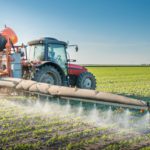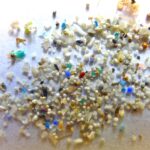The current situation illustrates just how much nitrogen from agriculture is suffocating the soil and polluting the groundwater. Climate-neutral and sustainable agriculture by 2050 should provide an outcome. Chemistry can play a helping hand in this.
In the transition to a sustainable agriculture, farmers can use chemical sensing technologies to measure concentrations of substances in the air, soil and water at exactly those locations where this information is needed. Substances measured can be separated using chemical membranes. Furthermore, chemistry can design and synthesise substances that increase the ability of plants to take up nitrogen and also to limit nitrogen leaching by reducing its uptake from manure.
To a certain extent, the production from sustainable agriculture depends on the precise chemical dosing of nutrients to prevent overfertilisation. Another important factor is found in chemical food additives that improve the ruminal and intestinal digestion of cattle so that the amount of greenhouse gases and ammonia in the environment are reduced.
Chemical processes are also vital for the sustainable production of protein-rich resources and for the recycling of nutrient-rich waste streams and other biomass, such as manure and soil improvers. That equally applies to the development of methods to continually measure and optimise the biochemical composition of material flows.
Sustainable agriculture and horticulture will produce more nutritious and safer food, and chemical analytical technology can be used to precisely determine which nutrients are present or missing in such products. To guarantee the safety of the resources incorporated as ingredients in foodstuffs, chemistry can be used to monitor the concentrations of impurities in fluids and material flows, such as toxins and drug residues.
This approach will allow safe and more nutritious foodstuffs to be produced with a minimum impact on the environment. When the foodstuffs eventually reach the shop shelves, chemical sensors can be used to measure the gas composition and therefore the shelf life of the food in the packaging. That will help minimise food wastage.
Download the KIA ‘Landbouw, Water en Voedsel’



